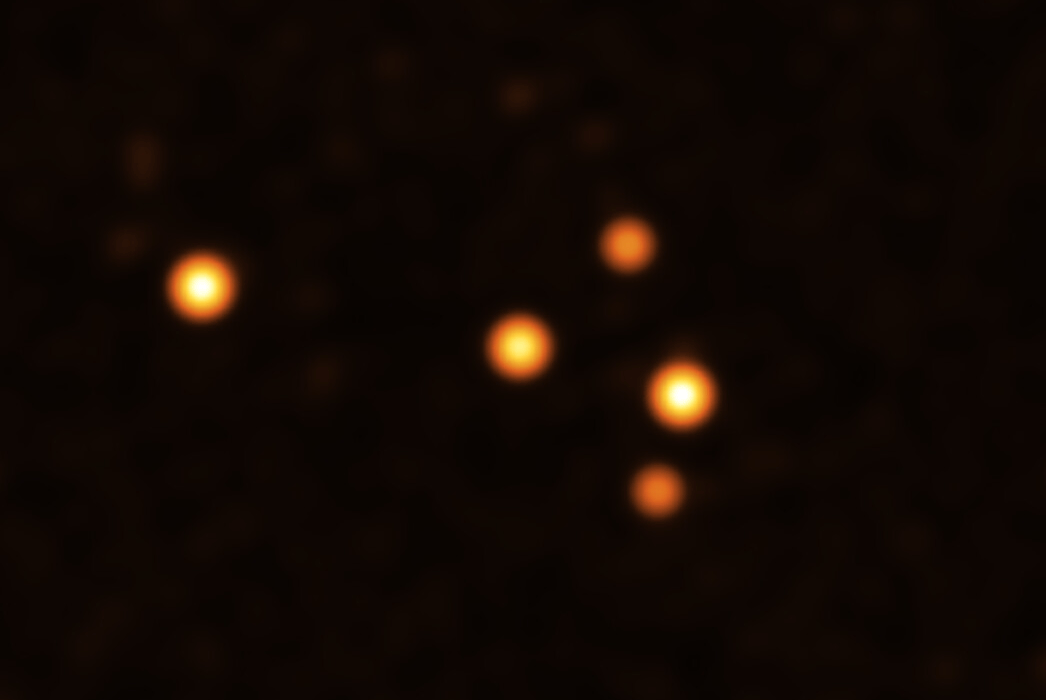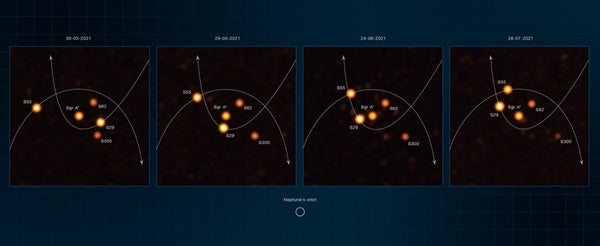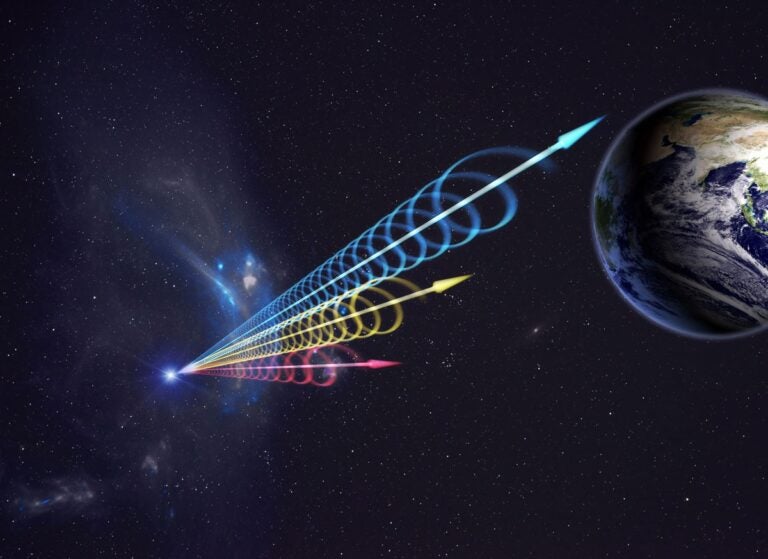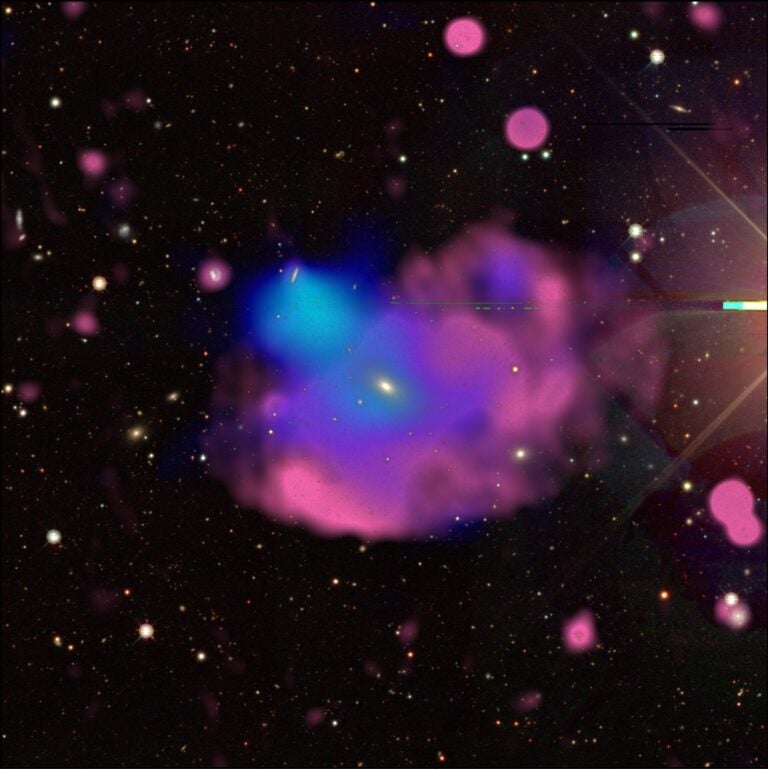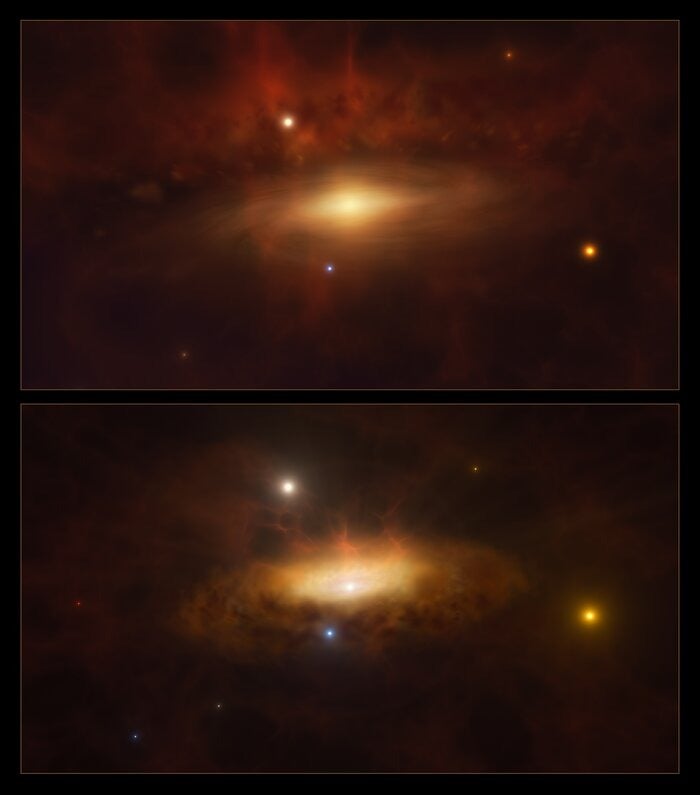The points of light circling the central object in this animation may look like planets orbiting a star — but in fact, they’re stars being flung around the supermassive black hole at the core of our Milky Way galaxy.
This sequence of infrared images was taken across four months in 2021 by the Very Large Telescope Interferometer (VLTI) in Chile. It’s the clearest view astronomers have ever captured of the region around Sagittarius A* (Sgr A*), a radio-emitting source made of hot gas and dust surrounding our galaxy’s central black hole.
“The VLTI gives us this incredible spatial resolution and with the new images we reach deeper than ever before,” said Julia Stadler, the team leader and an astronomer at the Max Planck Institute for Astrophysics in Garching, in a statement. “We are stunned by their amount of detail, and by the action and number of stars they reveal around the black hole.”
The team used all four of the 8.2-meter telescopes that make up the European Southern Observatory’s Very Large Telescope facility. The scopes worked in concert with an instrument called GRAVITY to take advantage of a technique called interferometry, exploiting the interference of light waves from the beams of each telescope to produce sharper images than a single telescope can obtain.
This allowed them to see details previous observations had missed, like the star S300 (at lower right throughout the sequence above). One star, S29, passed within just 8 billion miles (13 billion kilometers) of the black hole — a little more than twice the average distance of Pluto from the Sun. That makes it the closest pass of a star to Sgr A* ever observed.
The video below shows the calculated trajectories of each of the stars. Based on these trajectories, the team was also able to make the most precise estimate yet of the mass of the Milky Way’s black hole: 4.30 million times the mass of the Sun.

